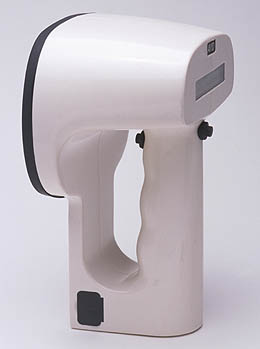|
|

An AVID chip reader for scanning identity microchips.
Powerhouse Museum collection.
|
In
1994 immigration officials from the United States government
implemented a system known as deployable mass population
identification and tracking system (DMPITS). It was
introduced in an effort to facilitate the processing of
thousands of refugees from Cuba and Haiti.
The
refugees were required to wear a wristband, each containing
a microchip. The microchips could be scanned to uniquely
identify a particular refugee and matched to other information
held about that person. The United States believed this
was the most effective way to manage the number of people
attempting to enter the United States, however some refugees
were concerned about the nature of the process.
The
story of the Cuban and Haitian refugees will be used to
provide a focus for the examination of a number of concepts
in the Stage 6 syllabus, Information Processes and Technology,
such as:
- data,
information and systems
- the
interactive nature of effective information-based systems
- available
and emerging information technologies
- the
social and ethical issues associated with the use of information
technology and information systems, such as equity and
access, privacy and freedom of information. (BOS, 1999:
6)
In
addition the case study has relevance for those studying
Design and Technology and Software Design and Development.
Information
systems are management or control systems. They can manage
a machine, organise processes, such as financial transactions
or maintenance schedules. However, they are also used to
manage social processes, where much of the information in
the system represents people, such as the electoral roll.
Within
a society there is a tension between the need to effectively
manage the society and the right of an individual to their
privacy. At any given time a balance may be established,
but new technologies can upset the balance.
 |
Case
studies developed by the Professional Support and
Curriculum Directorate and supported by the Multicultural
Programs Unit of the NSW Department of Education and
Training in partnership with the Powerhouse Museum
|
 |
|